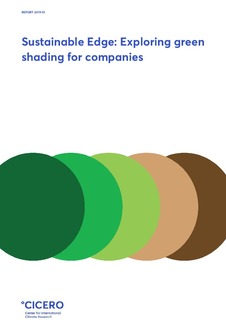| dc.description.abstract | Despite the importance of finance in driving the green economic transition, it is not easy for investors to analyze the degree of sustainability and climate risk exposure of their portfolios – and to fully exploit the value creation potential associated with companies providing sustainable solutions.
The aim of our feasibility study is to provide a starting point for a methodology that gives investors and public authorities a practical tool for understanding climate risk and which companies are best situated to contribute to the low-carbon, climate resilient future. Our method is based on the CICERO Shades of Green methodology which allocates a shade of green to activities depending on how well the investment is aligned with a low-carbon, climate resilient future. We have taken an iterative approach to methodology development with the involvement of financial sector partners and engagement with companies to guide our process. A key strength of this methodology lies in the facilitation of a dialogue between investors and companies to understand how green the companies are and to track their progress in aligning with a low carbon and climate resilient future.
We found that the methodology is robust across the small sample of companies analyzed in this preliminary study. Further development and testing is required to advance the methodology and approach. The feasibility study also identified key challenges, the foremost of them data availability and data quality. Going forward, the key challenge will be to move from a qualitative to more data-driven, quantitative approach.
The feasibility study is a starting point for discussion and further development and not yet a conclusive analysis. While the method has potential, the analysis presented in this report should be viewed as illustrative and not a conclusive view on the companies analyzed. The next phase of development would include testing the method against a larger pool of companies, developing sector benchmarks and will be to incorporate quantitative aspects into our qualitative approach | nb_NO |
